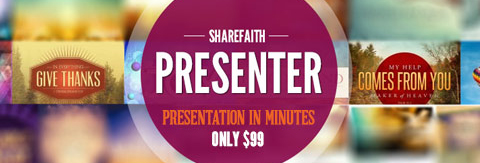Every Fall Semester I talk to my freshman worship students about today’s worship world. It is always good to give them some perspective on current trends and also to hear from them about what they see in terms of trends for the future. They always seem to have their finger on the pulse of what’s happening in worship and historically they have been pretty accurate with their predictions. Based on our class discussion, here is the list of the top five trends in worship music.
1. Music styles will change. The students were evenly divided about what style would be most prevalent. Half the class predicted Mumford style worship, and the other half predicted Dubstep worship. If I were a betting man, I would put my money on Mumford-influenced worship.
2. Songwriting will likely increase, especially in the local church context. More and more churches are writing their own material these days. Our students believe the ability to write songs (or at least, to foster songwriting) will be an important skill for the worship leaders of tomorrow. Students are aware of well-known churches writing music, but also believe that more churches will follow suit by writing their own songs.
3. Use of technology to help plan services. Many of the students were aware of websites like: planningcenteronline.com and worshipplanning.com, but thought there would be other websites and apps (such as this one) created in the future.
4. Resurgence of traditional worship. Students believed the pendulum will swing back from contemporary worship to more traditional forms and styles. The Gen Y generation seems open to the use of hymns more than prior generations, and also seem more open to liturgy than previous generations. Even in our “free church” congregations, liturgical elements and the church year are being used in some congregations to a greater degree.
5. Use of strings. Many churches are using string players (or string pads) to give color, “pad” support or obbligato lines, and students feel this trend will continue. Secular artists from Mumford to Yellowcard are using strings. Christian artists from Skillet to Gungor to the Rend Collective all are featuring strings in their bands. There are also online resources that can help people try to do this effectively in their local ministries.
With the above caveat about Dubstep worship, I agree that these are all trends that will likely impact the worship world in the future. In addition, I embrace and endorse these changes. Our mainstream worship style seems like it has been stylistically static since the 80’s.
Songwriting fulfills the biblical command to sing a new song. Technology can help organize our ministries. Traditional worship can inform and deepen our modern worship culture. Strings can add interest and provide ministry opportunities for our talented string players that may be in our congregations.
What do you think?
My students voice some continuation of some current trends in worship music and some predictions for the future. Do you have any predictions for the future?
![]()
 Dr. O’Neel serves as the Director of the worship program at Cedarville University. He has served the local church for over 20 years, including full-time worship pastorates in Texas, California, and Oklahoma. Dr. O’Neel has published articles on church music and leadership, blogs on worshipblogger.com, and is active as a worship leader, conference presenter, and worship consultant.
Dr. O’Neel serves as the Director of the worship program at Cedarville University. He has served the local church for over 20 years, including full-time worship pastorates in Texas, California, and Oklahoma. Dr. O’Neel has published articles on church music and leadership, blogs on worshipblogger.com, and is active as a worship leader, conference presenter, and worship consultant.


